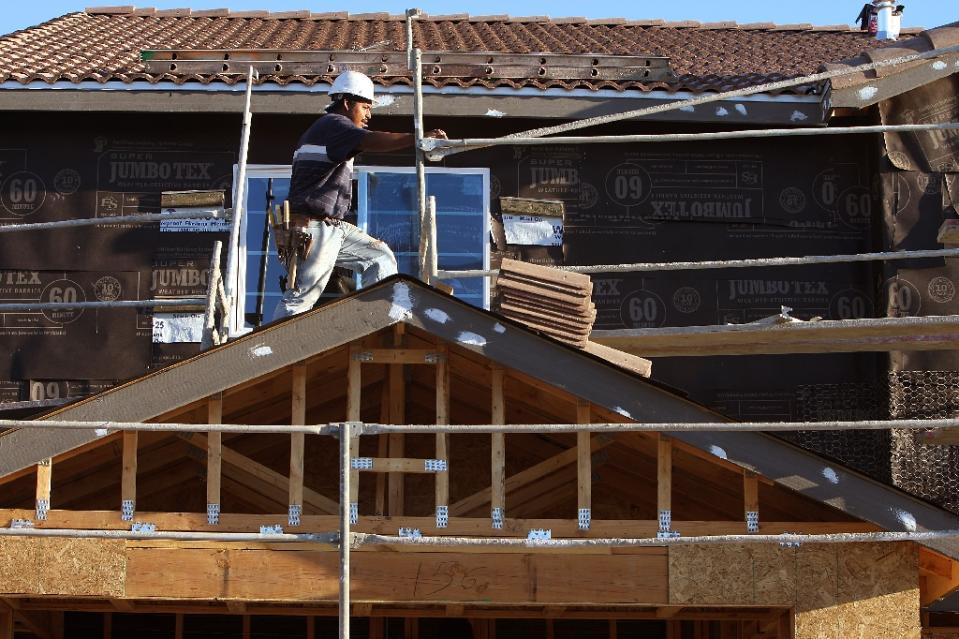Texas is dominating US homebuilding

Not every housing market has embraced new construction to accommodate the pent-up demand for new homes in the US. But one state will experience a huge surge in homebuilding this year, according to a new report from Trulia.
Austin, Dallas and Houston, Texas metro areas are on pace to build nearly 130,000 new homes in 2017. This figure represents more than 10% of all building permits across the US and nearly as much as 50 other large US metro areas combined.
To come up with this figure, Trulia chief economist Ralph McLaughlin analyzed census building permit data on the number of permits issued annually between 1980 and 2016, and for the first half of 2017. Using the latter, he projected the level of building permits for the full year of 2017 for each metro, and compared that figure with other markets as well as each metro’s own historical annual average level of building permits from 1980 to 2016.
It’s worth noting that the historical level of construction ranges from a lot in places like Houston and Phoenix, to very little in places like San Francisco and Detroit. But Trulia’s report doesn’t just examine total homes that will be built this year, but also how each metro’s construction activity compares to its own historical average.
Regional trends
Austin; Charleston, South Carolina; and Nashville, Tennessee are on track to build 107.7%, 72.8%, and 65.8% more homes in 2017 than their local historical average, the most of the largest 100 metros.
Rounding out the top 10 are Dallas; Denver, Colorado; and California’s San Francisco and San Jose markets. Boston and Philadelphia are the only northeastern metros to make the cut. The latter two still have relatively low homebuilding activity, but they’re on pace to outperform their historical averages in 2017.
The South, overall, is the strongest when it comes to homebuilding activity. In addition to the Texas markets, Charleston and Nashville are projected to finish 72.8% and 65.8%, respectively, more residential construction than their historical average.
In stark contrast, northeastern cities like Allentown, Pennsylvania; New Haven, Connecticut; and Worcester, Massachusetts, are all set to build fewer than 500 homes each, which is around 80% fewer homes than their historic average.
What are the larger implications?
Whether a city is building homes (or not) is highly indicative of other economic factors.
Similar to identifying which metro areas have seen the largest influx in construction workers, homebuilding is an additional indicator of the economic health of a particular city.
“Homebuilding matters more than you might think. Not only are newly built homes a source of new home inventory as well as construction jobs, they also help increase existing inventory through a chain-reaction effect: buyers of new homes often sell their existing one, which frees up a home for someone else, who in turn decides to buy it and sell their home, which then becomes a home for a first-time homebuyer,” says McLaughlin.
The three main determinants of homebuilding
The primary factors that lead to new residential construction are strong job growth, increasing wages and rising home values, according to McLaughlin.
Trulia examined the relationship between job growth, income growth, and home price growth, as well as post-recession changes in the residential vacancy rate and post-recession levels of housing density. The former three factors had statistically significant relationships with homebuilding, whereas the latter two don’t.
The most impactful factor is job growth, which McLaughlin measures as the rate at which a market added jobs between 2010 and 2016. For every percentage point increase in job growth, there is a 5% change, on average, in permitting activity across the 100 largest metros.

Income growth, which McLaughlin measures as the percentage increase in median household income between 2010 and 2016, helps bolster homebuilding for two distinct reasons: housing is a normal good, which means as people earn more money they tend to buy more or better quality homes, and new homes are more expensive than existing ones, so gains in income might allow existing homeowners to trade up to new homes.
Last, price appreciation, which McLaughlin defines as the percentage increase in the median home value between 2010 and 2016, is important because as the price of goods increase, suppliers will tend to supply more of it, according to McLaughlin.
“We also found that unfettered price appreciation isn’t good for homebuilding either. Large price gains may do two things that discourage building: they may drive up the price of land, which makes it costlier for builders to build, and as price gains outpace incomes, all homes (especially new ones) become further out of reach of home buyers,” he adds.
Melody Hahm is a writer at Yahoo Finance, covering entrepreneurship, technology and real estate. Follow her on Twitter @melodyhahm.
Read more:
